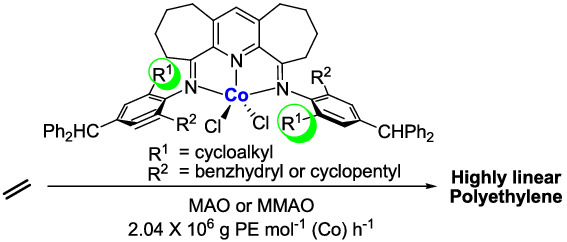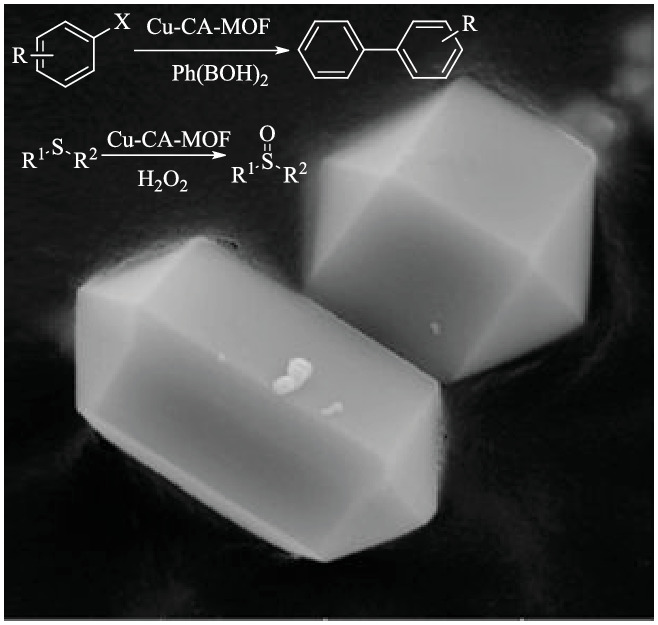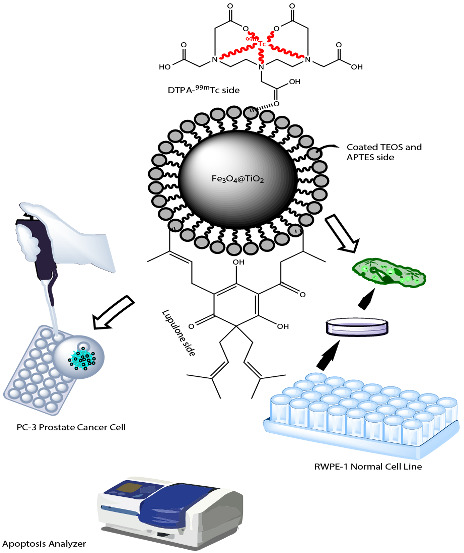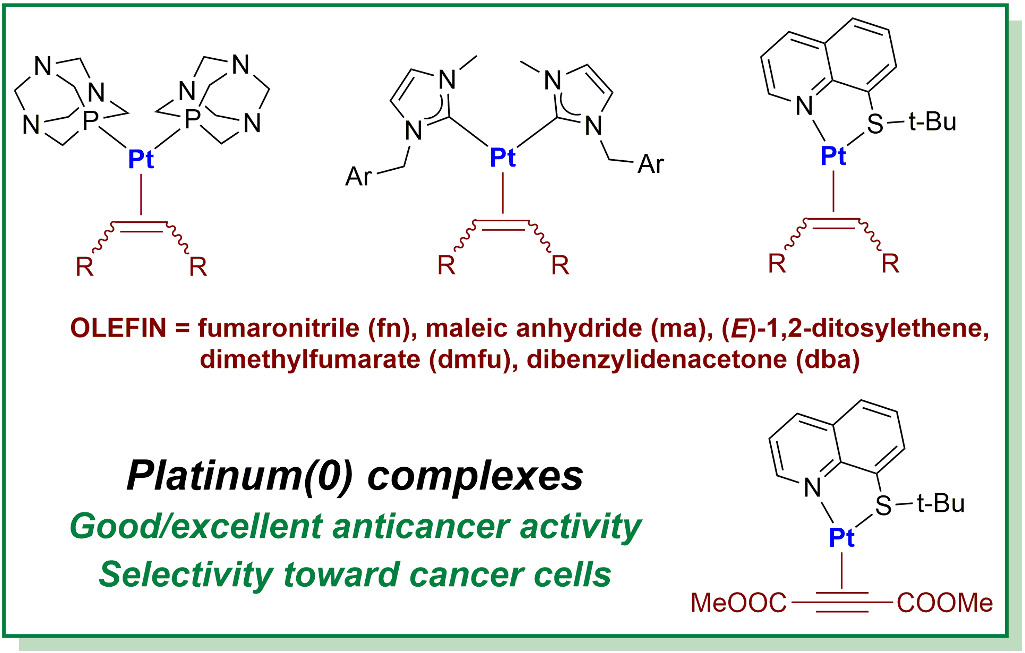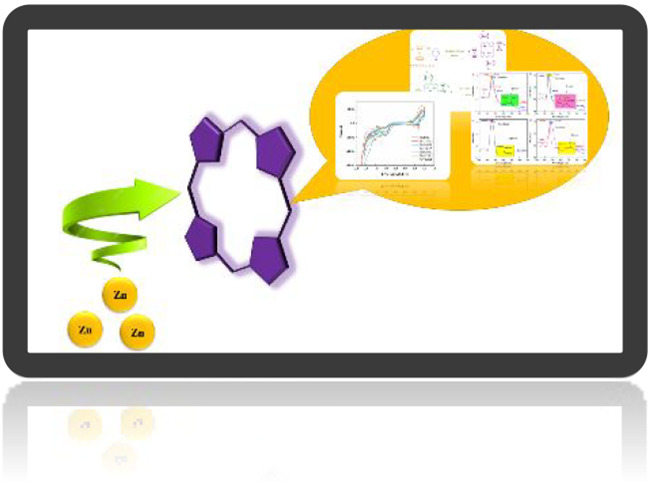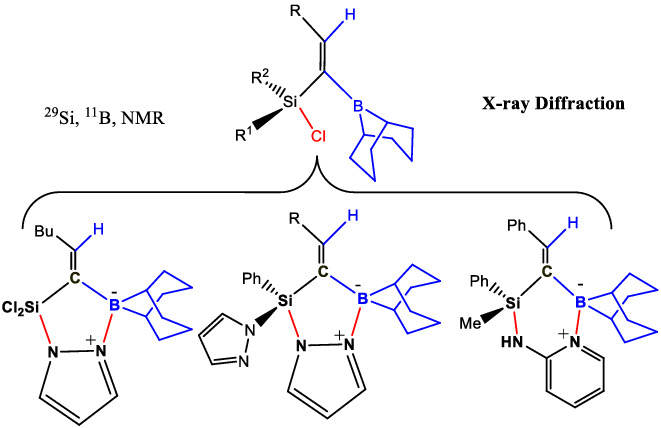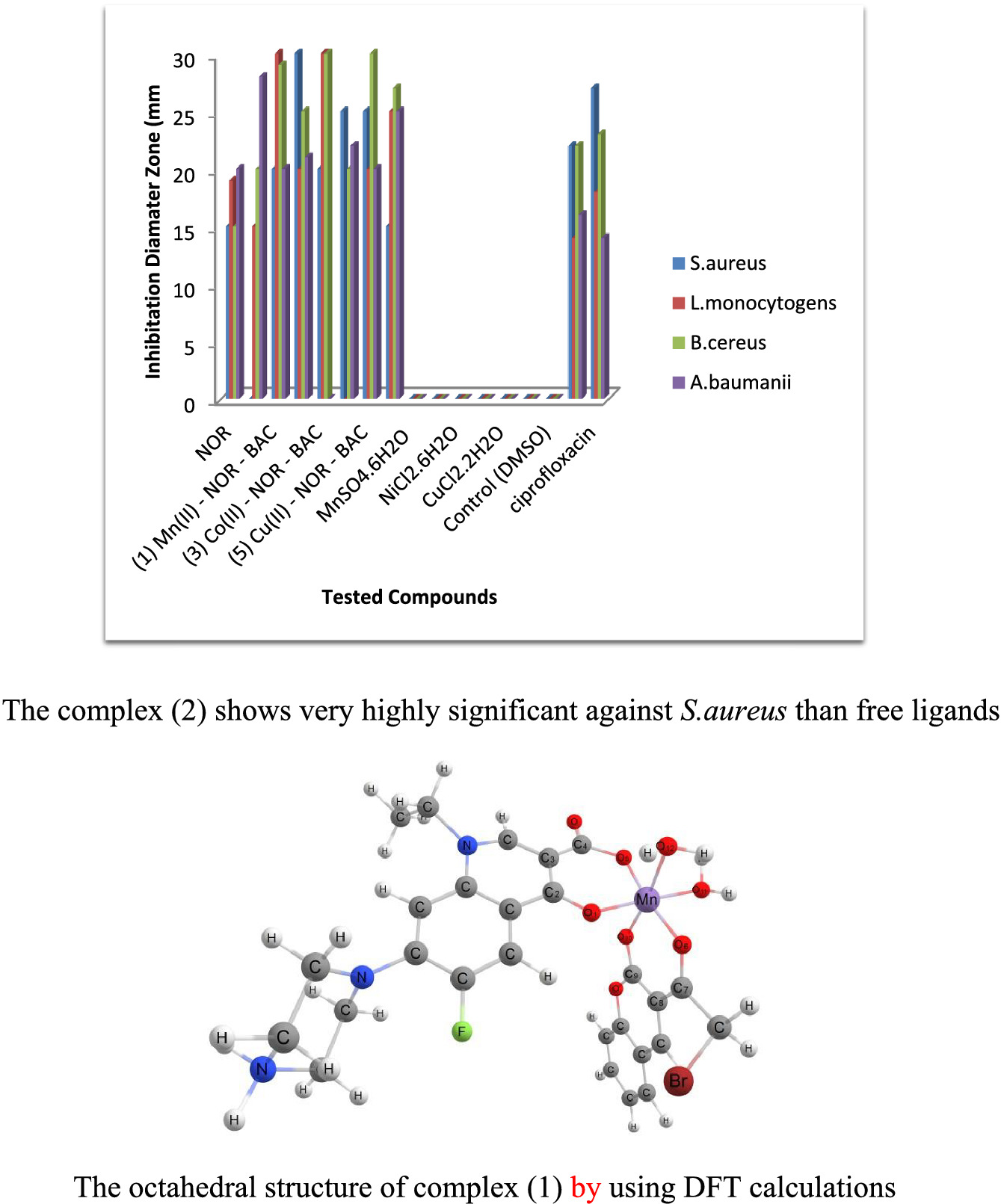Journal list menu
Export Citations
Download PDFs
FEATURED COVER
Featured Cover
- First Published: 29 November 2021
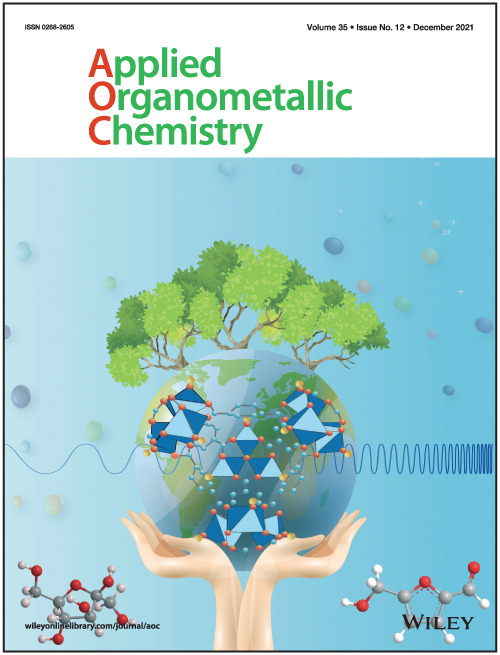
The cover image is based on the Full Paper Metal–organic frameworks as catalysts for fructose conversion into 5-hydroxymethylfurfural: Catalyst screening and parametric study by Noor Aljammal et al., https://doi.org/10.1002/aoc.6419.
ISSUE INFORMATION
REVIEWS
Advances in non-palladium-catalysed Stille couplings
- First Published: 14 September 2021
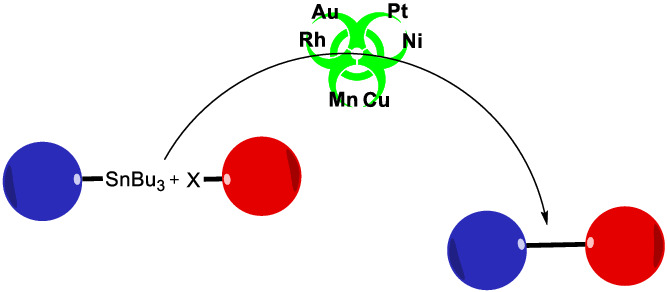
Palladium-catalysed Stille couplings has got greater attention owing to their applicability in the construction of heavily functionalised C–C adducts, which are significant in natural product synthesis and other related fields. Non-palladium Stille couplings are a better choice for organic synthesis since they are more cost-effective, less toxic, and some having superior catalytic efficiency compared with conventional techniques utilising Pd. In the present review, we focus on the developments in non-palladium Stille couplings until 2021.
RESEARCH ARTICLES
Synthesis and evaluation of antioxidant and antimicrobial activity of new spiropyridine derivatives using Ag/TiO2/Fe3O4@MWCNTs MNCs as efficient organometallic nanocatalyst
- First Published: 09 October 2021

The Ag/TiO2/Fe3O4@MWCNTs MNCs as a high performance catalyst were employed for the preparation of a new family of substituted spiropyridine employing the one-pot condensation reactions of acetophenones, diethyloxalate, ammonium acetate, isatin, malononitrile, and electron-deficient acetylenic compounds in water at room temperature. Investigation of antioxidant and antimicrobial property of some synthesized compounds is another purpose in this research work.
Endohedral M@B40 (M = Na and Ca) metalloborospherenes as innovative potential carriers for chemotherapy melphalan drug: A theoretical study
- First Published: 20 August 2021
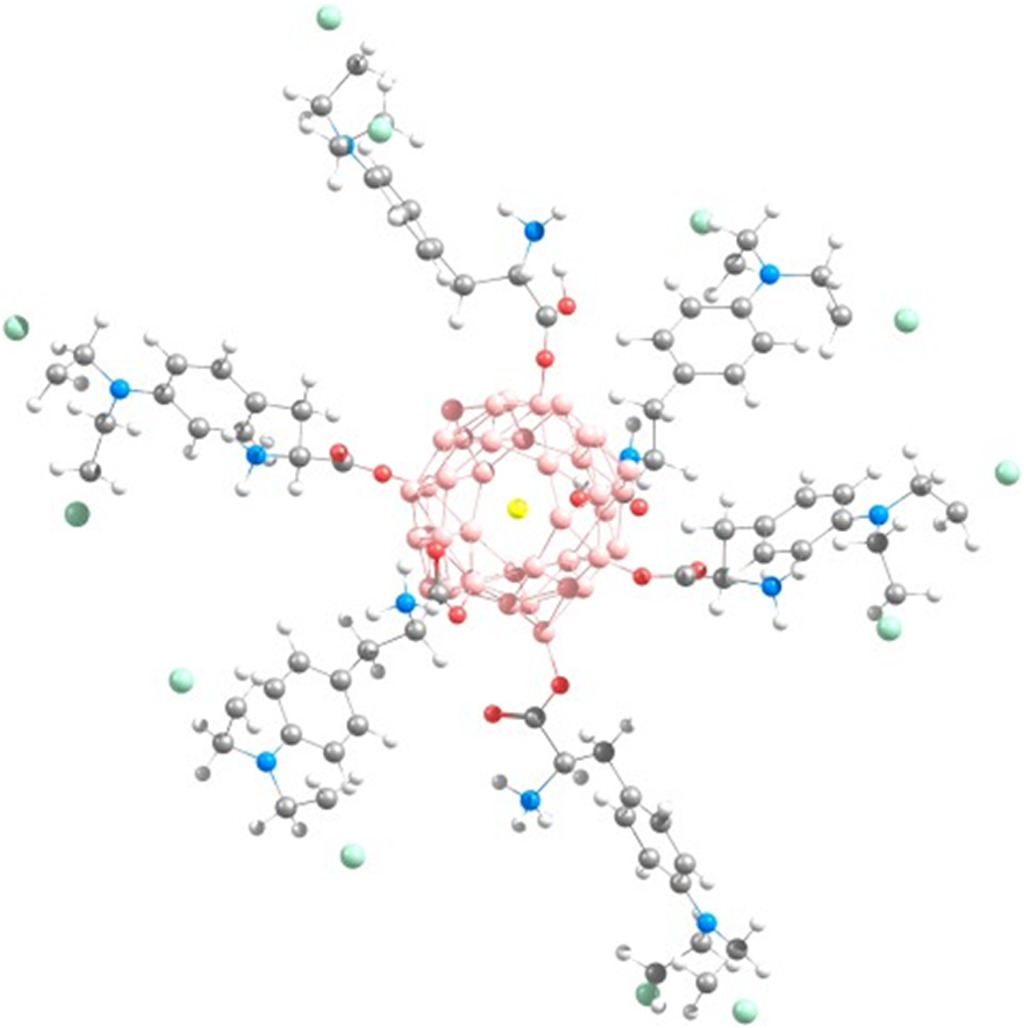
M@B40 (M = Na and Ca) introduced as promising carriers for melphalan (MP) drug. It strongly interacts with Metal@B40 fullerenes in water phase. Remarkable solubility in the aqueous medium is observed for M@B40-6MP systems. It is found that the release of the MP drug from the surface of the introduced carriers could be occurred in the vicinity of the cancer cells upon the protonation is feasible. To sum up, theses fullerenes might be innovative boron-based candidates as drug delivery systems.
Synthesis, characterization, biological evaluation, and molecular docking approach of nickel (II) complexes containing O, N-donor chelation pattern of sulfonamide-based Schiff bases
- First Published: 19 August 2021
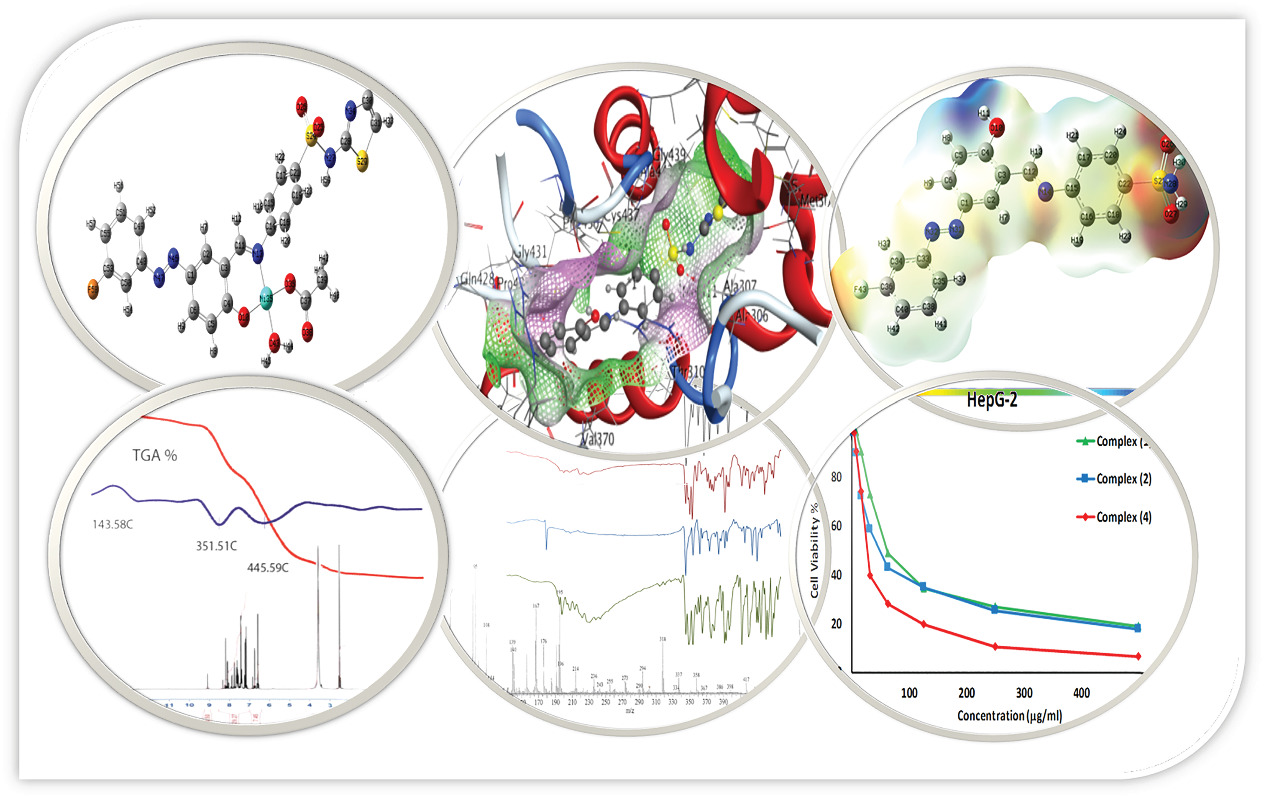
New non-platinum metal complexes derived from four Schiff bases whose structures contain combination of 3-fluorophenylazo, sulfonamide, and/or thiazole moieties are synthesized, characterized, and screened for their antimicrobial and anticancer activities. Interestingly, docking simulation predicted good propensity to bind with the breast cancer protein 3s7s in case of L4 and its complex. The antiproliferative action against three cancer cell lines demonstrated their high inhibition efficacy as candidates for newly antitumor agents.
Functionalized nanomagnetic graphene by ion liquid containing phosphomolybdic acid for facile and fast synthesis of paracetamol and aspirin
- First Published: 30 August 2021
High-efficiency fluorescent probe constructed by Cd(II) complex for detecting nitro compounds and antibiotics
- First Published: 11 August 2021
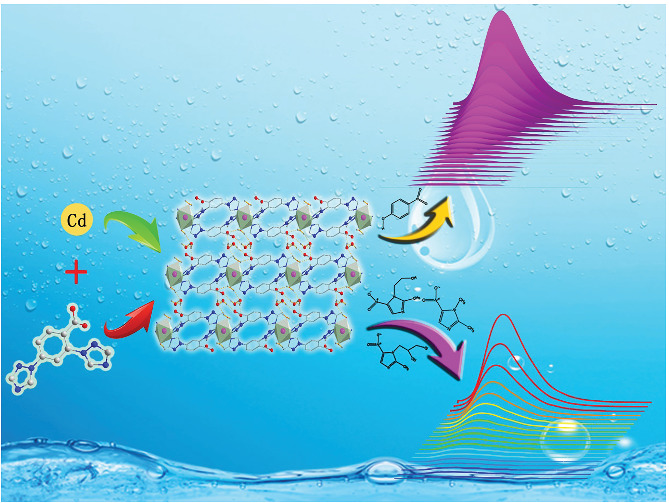
A novel 1D Cd-MOC showed perfect performance for detecting p-nitrophenol, metronidazole, ornidazole, and dimethylimidazole. The limit of detection (LOD) of them are 0.04, 0.02, 0.07, and 0.08 μM, respectively. The synthesized complex can maintain high recyclability after 5 cycles of the test substance. In summary, due to the strong stability, high sensitivity, and excellent selectivity of the synthesized complex, it provides a convenient method for the development of an analytical platform for detecting water pollutants.
A comparative study of catalytic activity on iron-based carbon nanostructured catalysts with Pd loading: Using the Box–Behnken design (BBD) method in the Suzuki–Miyaura coupling
- First Published: 09 September 2021
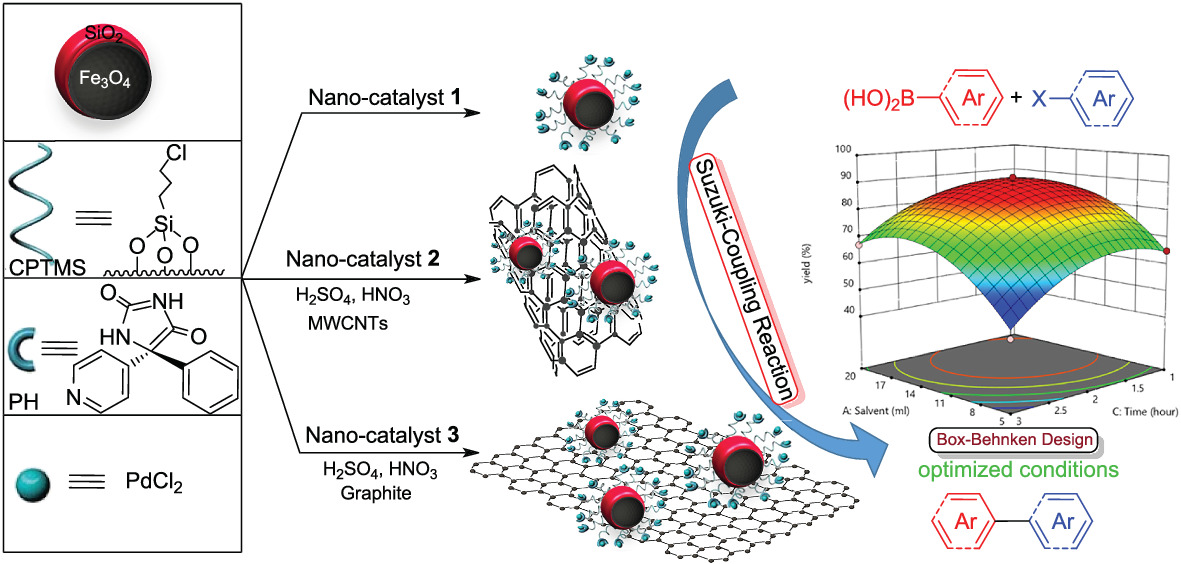
In this paper, we have prepared highly dispersible, recyclable, and reusable based on iron and carbon nanostructures (graphene/carbon nanotubes) with a simple process and analyzed by various analytical methods. These catalysts were magnetically active, so due to their magnetic iron oxide nanoparticles, carbon nanostructure, and palladium metal, they were a great potential application for catalysis. The response surface methodology with Box–Behnken design was used to determine a feasible experimental design to optimize the coupling conditions of the Suzuki–Miyaura reactions.
Bio-derived nanosilica-anchored Cu(II)-organoselenium complex as an efficient retrievable catalyst for alcohol oxidation
- First Published: 09 September 2021
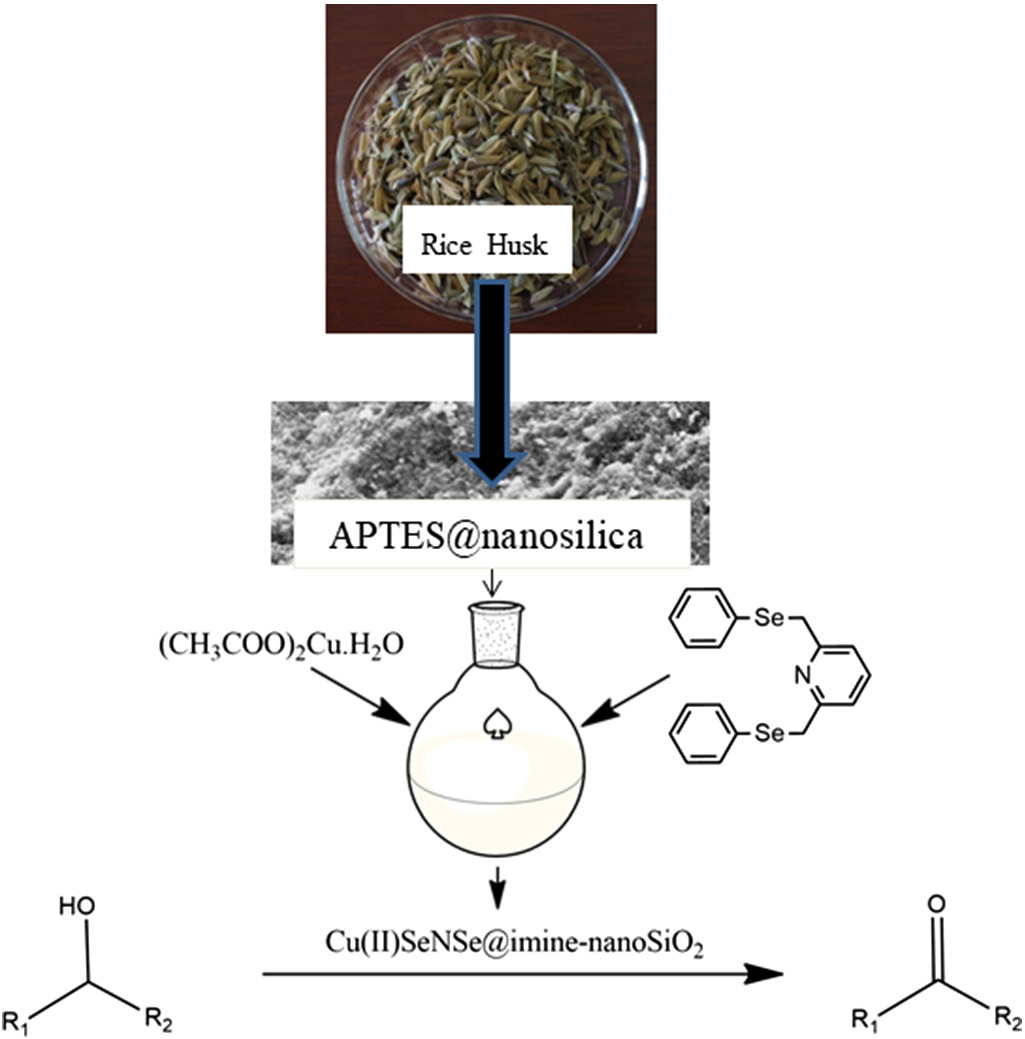
The present research work reports a novel, agro-waste-derived nanosilica-supported six-coordinated Cu(II) complex with Se–N–Se pincer ligand. This catalyst was screened in the oxidation of alcohols, and we found several advantages such as short reaction time, environmentally benign mild reaction conditions, good to excellent yields, and good stability. The catalyst could be easily separated from the reaction products and reused for at least five successive runs effectively.
New heterogeneous catalysts containing platinum group metals recovered from a spent catalytic converter
- First Published: 25 August 2021
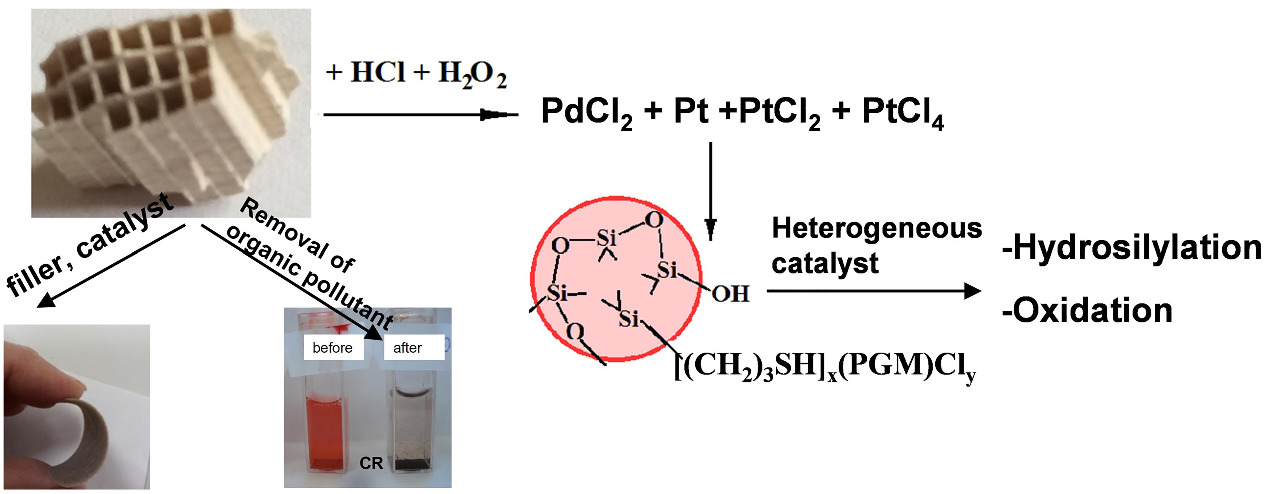
Platinum group metals (PGMs) recovered from a spent catalytic converter were loaded into specially designed mesoporous silica by complexation with mercapto groups. The resulted material is a heterogeneous hydrosilylation and oxidation catalyst. The scrap cordierite after PGMs extraction finds use as crosslinking catalyst and filler for high permittivity silicone composites and in removal of organic pollutants from water.
Indium-mediated allylation of carbonyl compounds in deep eutectic solvents
- First Published: 25 August 2021
FULL PAPER
Metal–organic frameworks as catalysts for fructose conversion into 5-hydroxymethylfurfural: Catalyst screening and parametric study
- First Published: 20 August 2021
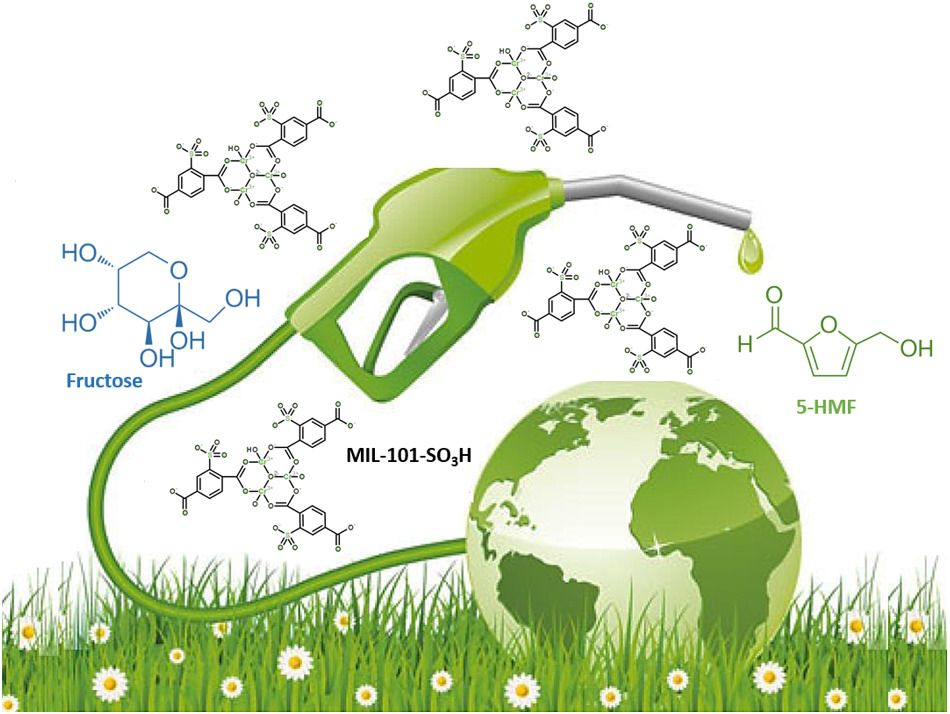
MOF-based catalysts were used for the selective conversion of fructose to 5-HMF. Catalytic performance of each MOF is tested in a microwave-assisted reactor. Over sulfonated MIL-101 in DMSO, 5-HMF yield was 90%. Unsaturated metal node sites show strong relationship with catalyst superior performance. Sulfonated MIL-101 was reusable for at least three cycles without deactivation.
RESEARCH ARTICLES
Highly effective selectively removal of carcinogenic dyes and iodine adsorption and release via a metal–organic framework based on multiple helical chains
- First Published: 26 August 2021
Effective visible-light CO2 photoreduction over (metallo)porphyrin-based metal–organic frameworks to achieve useful hydrocarbons
- First Published: 10 September 2021
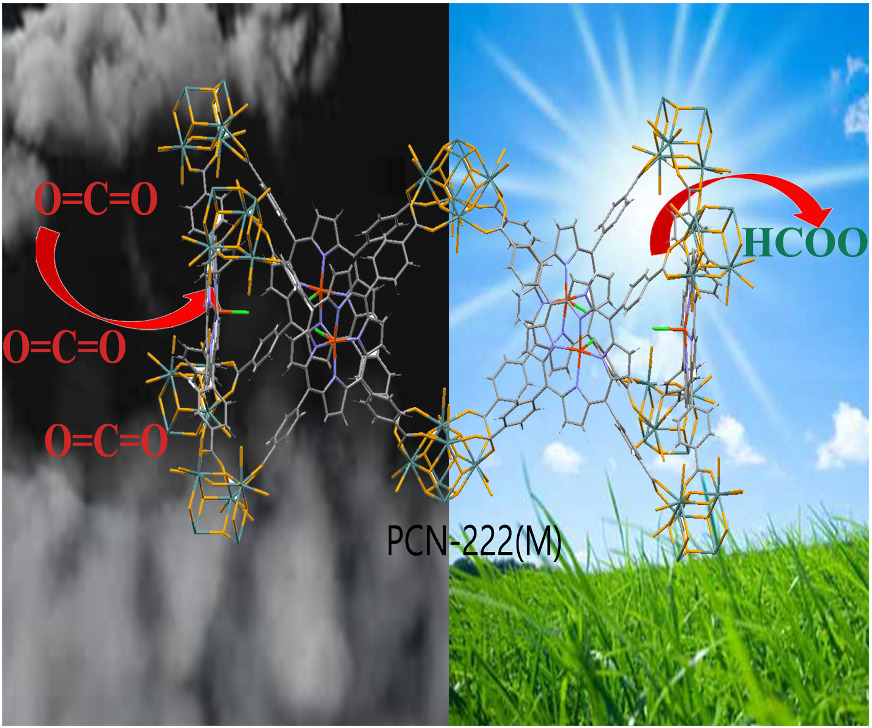
The highly stable mesoporous metal-organic frameworks, PCN-222(M), which can reduce CO2 to the useful chemicals, have been introduced. The as-prepared metal–organic frameworks (MOFs) represent a remarkable efficacious approach for the performance of the metalloporphyrin framework to CO2 capture capability and photocatalytic activity. The presence of the metal center of porphyrins promotes CO2 adsorption and activation.
Assembly of CuO nanorods onto poly(glycidylmethacrylate)@polyaniline core–shell microspheres: Photocatalytic degradation of paracetamol
- First Published: 26 August 2021
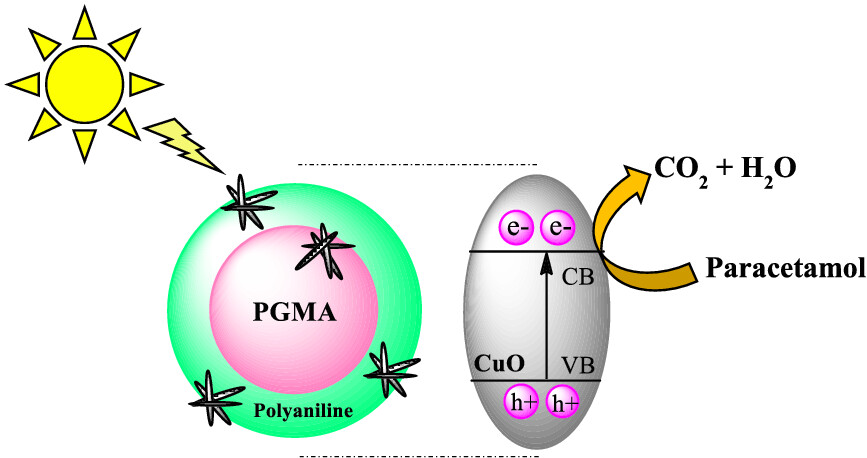
Poly(glycidylmethacrylate)@polyaniline microsphere-supported CuO nanoparticles show remarkable potential for photocatalytic degradation under visible light irradiation. Preliminary kinetic studies confer a pseudo-first-order kinetics. Poly(glycidylmethacrylate)@polyaniline/CuO nanocomposite can be recycled with a minimal deposited CuO release over five cycles.
Ship-in-bottle preparation of multi-SO3H functionalized ionic liquid@MIL-100(Fe) for acid-catalyzed ring-opening of epoxides
- First Published: 25 August 2021
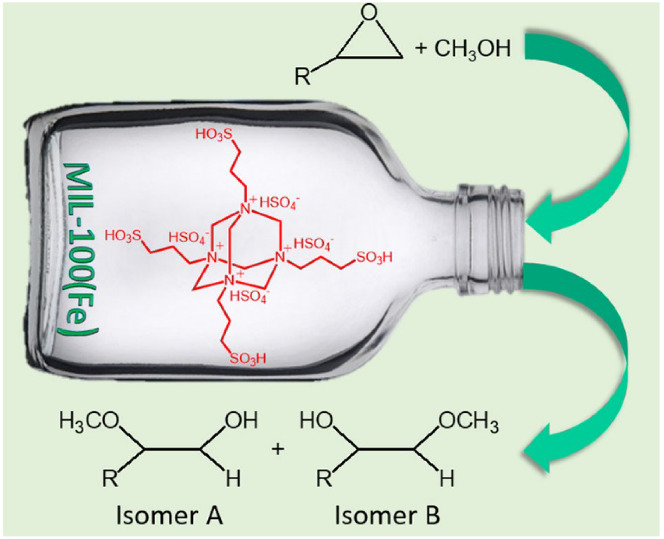
Multi-SO3H functionalized ionic liquid was synthesized into the porous structure of MIL-100(Fe) by ship-in-bottle strategy. The prepared Brønsted acidic MOF was utilized as catalyst for alcoholysis of epoxides under solvent-free conditions. The simple recovery of the catalyst made it possible to use it for up to four successive cycles.
N-alkyl imidazole-based homonuclear coordination complex as a neutral organocatalyst for the faster and efficient construction of 3,4-dihydro-2H-1,3-oxazine scaffold
- First Published: 24 August 2021
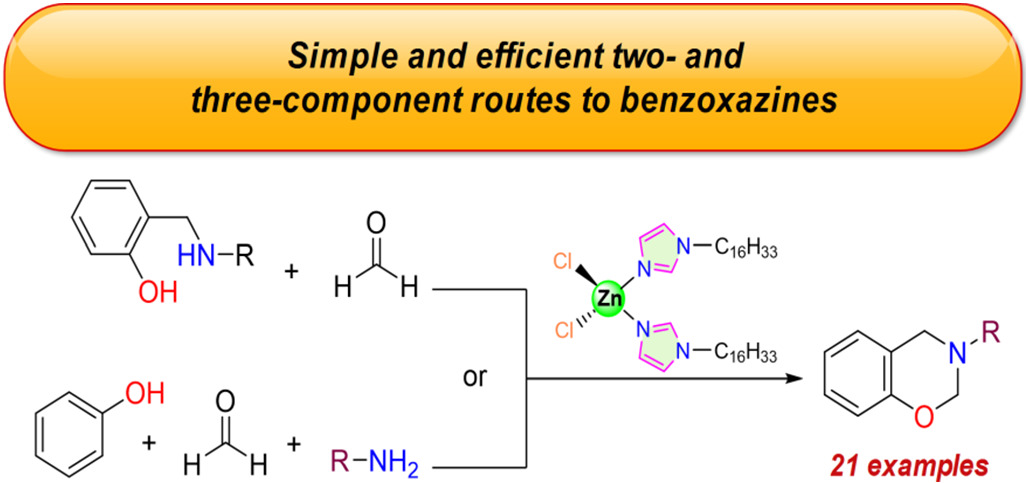
In this work, highly efficient two- and three-component routes were developed toward 3,4-dihydro-2H-1,3-benzoxazine monomers. For the first time, N-alkyl imidazole-based homonuclear coordination complex including zinc metal effectively catalyzes the formation of the benzoxazine ring system. This neutral organocatalyst exhibited high catalytic activity in the preparation of various substituted benzoxazines with high yields under milder reaction conditions.
FULL PAPER
Ultrasound-promoted novel route to triazabenzo[b]cyclopenta[lm]fluorenes: An efficient NiFe2O4@SiO2–SO3H nanocatalyst-assisted green synthesis
- First Published: 14 September 2021
RESEARCH ARTICLES
Three novel spiral chain Nd (III) Eu (III) Sm (III)complexes bridged by 1,1 '(1,4-phenylene-bis [methylene])-bis (pyridine-3-carboxylicaicd): Synthesis, structural characterization, and antitumor activity
- First Published: 26 August 2021
![Three novel spiral chain Nd (III) Eu (III) Sm (III)complexes bridged by 1,1 '(1,4-phenylene-bis [methylene])-bis (pyridine-3-carboxylicaicd): Synthesis, structural characterization, and antitumor activity](/cms/asset/6643b08f-5988-4869-9f92-8e6aad24e798/aoc6427-toc-0001-m.jpg)
Three new isomorphic metal complexes [Nd2(L)3·H2O]n, [Eu2(L)3·H2O]n, [Sm2(L)3·H2O]n(H2L = 1,1′(1,4-phenylene-bis [methylene])-bis (pyridine-3-carboxy- licaicd are novel structures and have favorable ability to induce apoptosis of HeLa cells. They will be used as potential cancer drugs in practical applications to meet the requirements of certain fields.
Two novel Cu (II) levofloxacin complexes with different bioactive nitrogen-based ligands; single-crystal X-ray and various biological activities determinations
- First Published: 02 September 2021
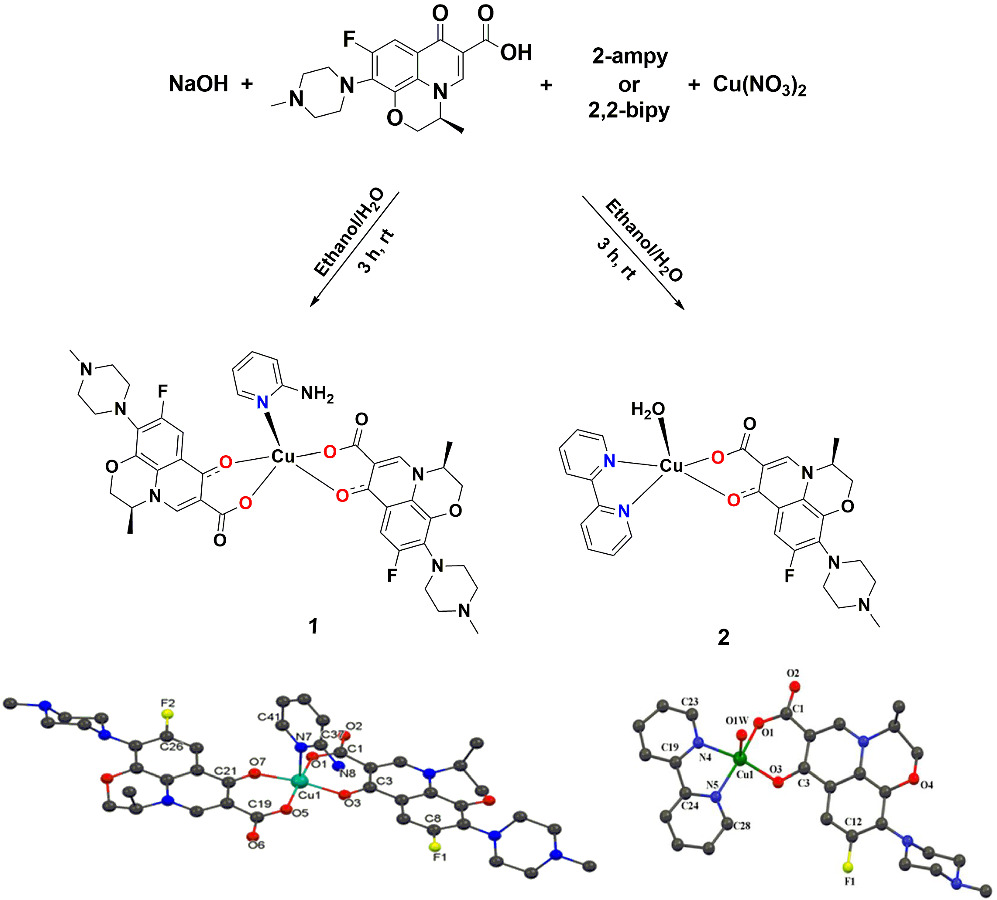
New copper levofloxacin complexes with 2-aminopyridine and 2,2′-bipyridine nitrogen-based ligands with the following molecular structures; [Cu (levo)2(2-ampy)].6.25H2O (1) and [Cu (levo)(H2O)(2,2-bipy)](NO3).2.5H2O (2) were synthesized and characterized. The crystal structure of complexes 1 and 2 were determined. The complexes were also evaluated for their antibacterial activity using in vitro agar diffusion method against four gram-negative bacteria and four gram-positive bacteria. In addition, MIC and MBC of the two complexes, their parent ligands, and free levofloxacin were also determined against various bacterial strains.
FULL PAPER
Metal–organic frameworks based on a benzimidazole flexible tetracarboxylic acid: Selective luminescence sensing Fe3+, magnetic behaviors, DFT calculations, and Hirshfeld surface analyses
- First Published: 05 September 2021
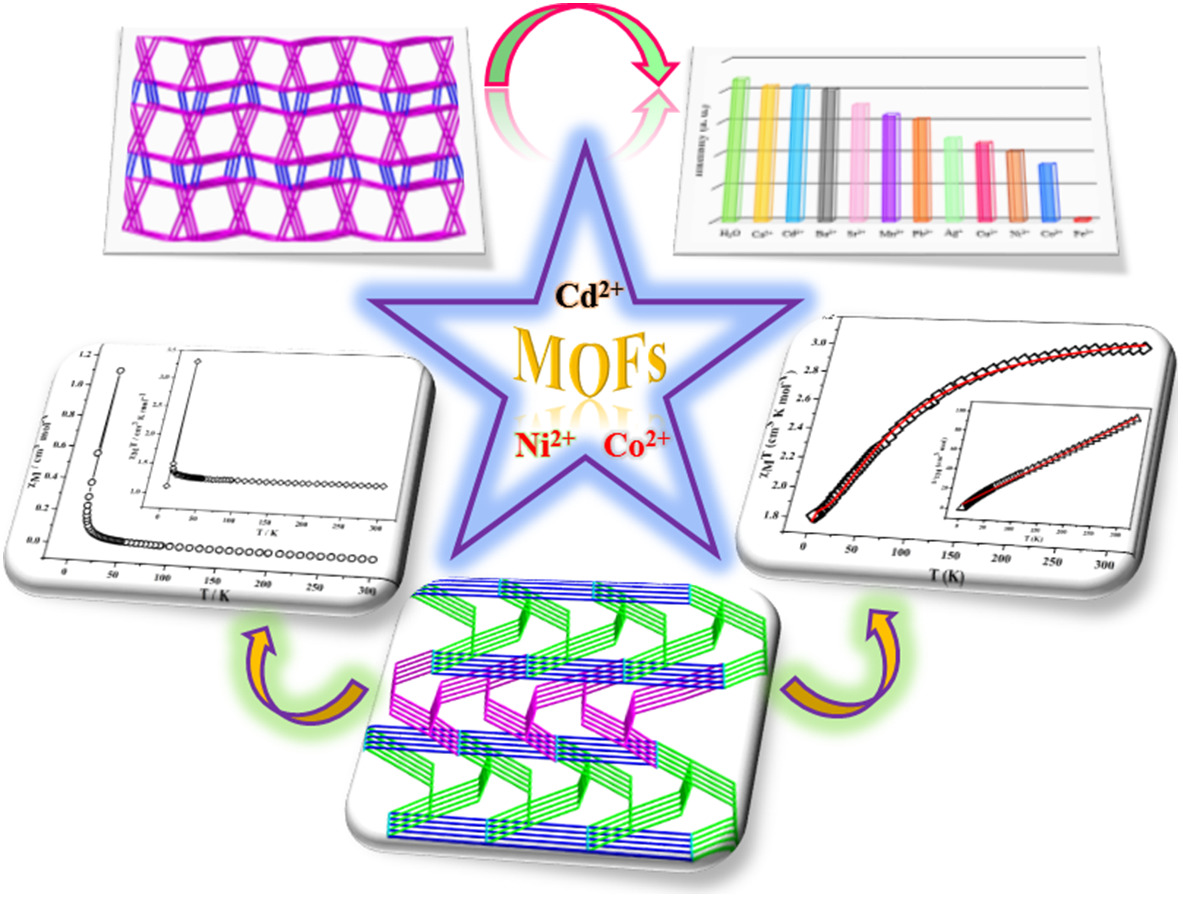
Four novel transition metal MOFs (1–4) have been successfully synthesized with the mixed-ligand strategy based on a predesigned functional flexible benzimidazole tetracarboxylic acid ligand (H4L) and different N-donor ancillary ligands. Of these, Complex 2 can sensitively and selectively detect Fe3+ in aqueous systems, and the possible sensing mechanism has been investigated using UV–vis spectroscopy, and Complexes 3 and 4 show strong antiferromagnetic and ferromagnetic coupling through M–O–C–O–M (Co for 3, Ni for 4) interactions, respectively.
RESEARCH ARTICLES
Cryptomelane nanorods coated with Ni ion doped Birnessite polymorphs as bifunctional efficient catalyst for the oxygen evolution reaction and degradation of organic contaminants
- First Published: 02 September 2021

Ni-ion doped Birnessite@Cryptomelane (Ni2+/B@Cr) hybrid structure was synthesized as a bifunctional efficient catalyst for Oxygen Evolution Reaction (OER) in neutral media and degradation of dye pollutants. New hybrid catalyst exhibited high catalytic activity for OER process and degradation of organic dye contaminants.
CuI-catalyzed, one-pot synthesis of 3-aminobenzofurans in deep eutectic solvents
- First Published: 10 September 2021

A green method is presented here for the synthesis of benzofuran derivatives from a reaction between alkynes, aldehyde, and amine using choline chloride-ethylene glycol deep eutectic solvent as green media and CuI as catalyst. The employed method includes easy workup, and 12 different benzofuran derivatives have been prepared in 7 h at 80°C in good yields.
FULL PAPER
RESEARCH ARTICLES
Synthesis and morphological studies of Tc-99m-labeled lupulone-conjugated Fe3O4@TiO2 nanocomposite, and in vitro cytotoxicity activity on prostate cancer cell lines
- First Published: 02 September 2021
Synthesis of tetranuclear complex of Pd(II) with thiosemicarbazone ligands derived from 2-quinolone and its catalytic evaluation in Suzuki–Miyaura-type coupling reactions and alkoxylation of chloroquinolines
- First Published: 03 September 2021
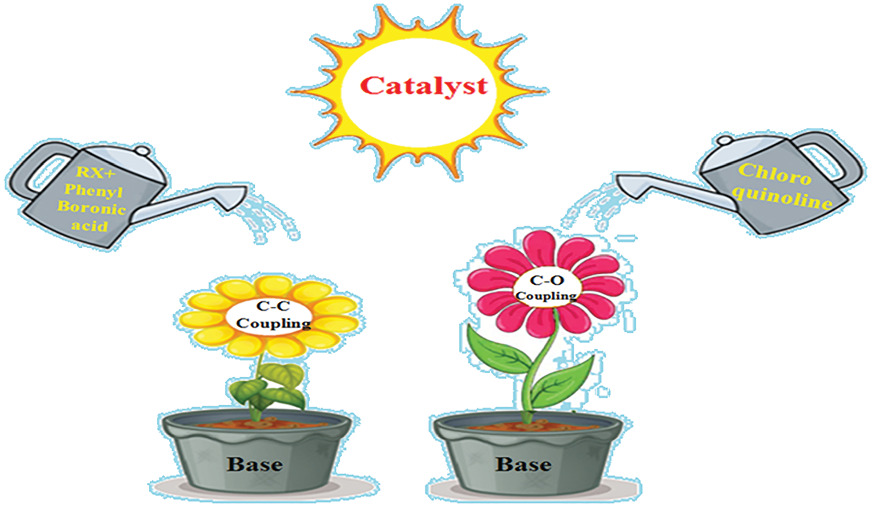
This work describes the synthesis of a tetranuclear palladium(II) complex from the ligand, 6-methyl-2-oxo-1,2-dihydroquinoline-3-carboxaldehyde-4(N)-phenylthiosemicarbazone and its application in Suzuki–Miyaura coupling reaction. When N-heterocyclic chlorides were taken as substrates, the reactions ended up in the formation of C-alkoxy products instead of the more expected C-arylated products.
Solvent-free oxidation of straight-chain aliphatic primary alcohols by polymer-grafted vanadium complexes
- First Published: 07 September 2021
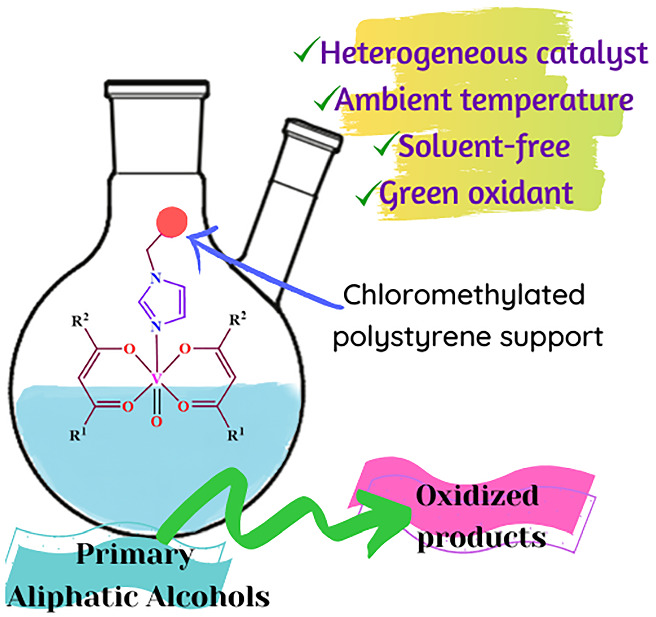
Imidazole-modified chloromethylated polystyrene anchored vanadium complexes Ps-Im-[VIVO(tertacac)2] (4), Ps-Im-[VVO2(dipd)2] (5), and Ps-Im-[VIVO(phbd)2] (6) were prepared in a straightforward way. All the catalysts are effective and efficient towards a series of straight-chain primary aliphatic alcohols. High reactivity, green oxidant, uncomplicated synthesis, easy recovery, recyclability, broad substrate scope, and moderate reaction conditions are the main advantages of these catalysts.
Synthesis and anticancer activity of Pt(0)-olefin complexes bearing 1,3,5-triaza-7-phosphaadamantane and N-heterocyclic carbene ligands
- First Published: 07 September 2021
Sterically hindered (pyridyl)benzamidine palladium(II) complexes: Syntheses, structural studies, and applications as catalysts in the methoxycarbonylation of olefins
- First Published: 07 September 2021
Novel meso-substituted ferrocene-appended porphyrins: Synthesis, characterization, and electrochemical evaluation
- First Published: 07 September 2021
FULL PAPER
Synthesis, structural characterization, density functional theory calculations, and antimicrobial, anticancer, and antimetastatic properties of nanosized heteroleptic complexes of cocaine/TMEDA with d-block metal ions
- First Published: 07 September 2021
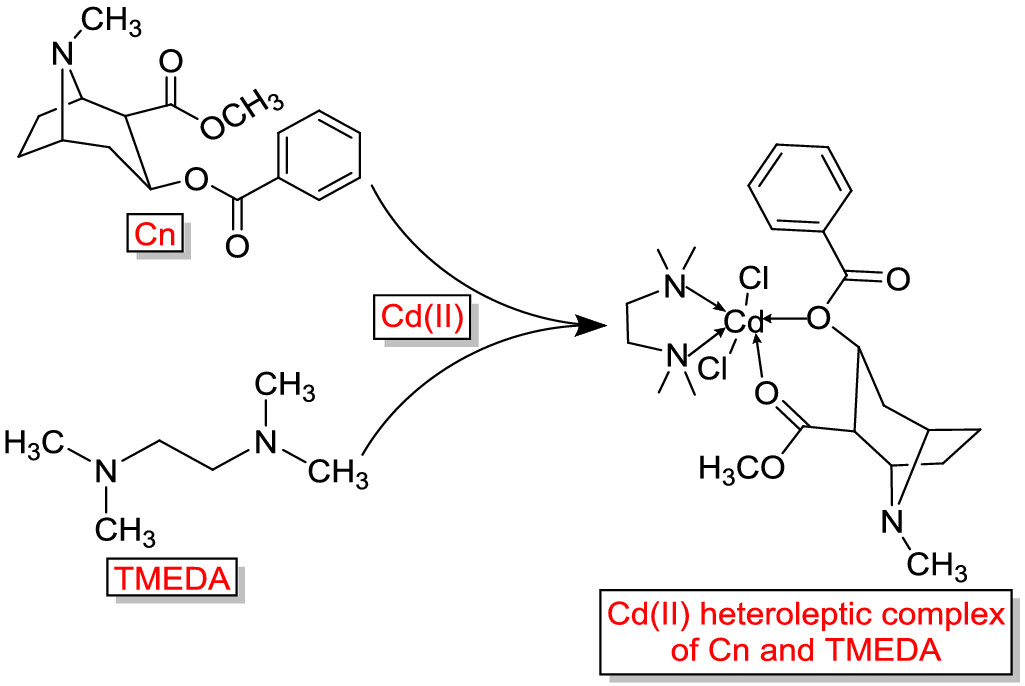
Eight novel nanosized heteroleptic complexes of cocaine/TMEDA were synthesized and structurally characterized via different spectral and analytical tools. DFT and TD-DFT calculations were conducted to investigate geometry optimization, electronic structure, and molecular electrostatic potential maps. The antiproliferative activity of the prepared complexes on the HepG-2 and MCF-7 cancer cell lines was studied. Further molecular mechanistic studies were performed on the Cd(II) complex to investigate its influence on the different processes related to cancer pathophysiology in the MCF-7 cell line.
RESEARCH ARTICLES
Synthesis of a sustainable heterogeneous catalyst, titanium dioxide-loaded hydroxyapatite for functionalised chromen-dihydropyridines under green conditions
- First Published: 08 September 2021
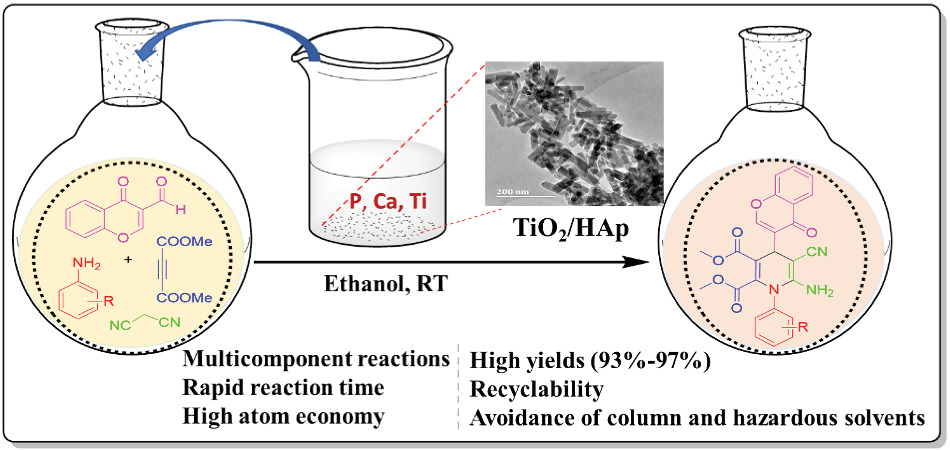
An efficient green protocol for the synthesis of the functionalised chromen-dihydropyridines employing a multicomponent one-pot condensation reaction of chromene-3-carbaldehyde, dimethyl acetylenedicarboxylate, malononitrile and different aromatic and heteroaryl amines was designed using a TiO2/HAp as heterogeneous catalyst in the eco-compatible solvent. The yield was up to 97%, and the catalyst is economical, fully recyclable and reusable for over five runs while preserving its high activity.
Unprecedented formation of a μ-oxobridged dimeric copper (II) complex: Evaluation of structural, spectroscopic, and electronic properties by using theoretical studies and investigations biological activity studies of new Schiff bases derived from pyrazolone
- First Published: 21 September 2021
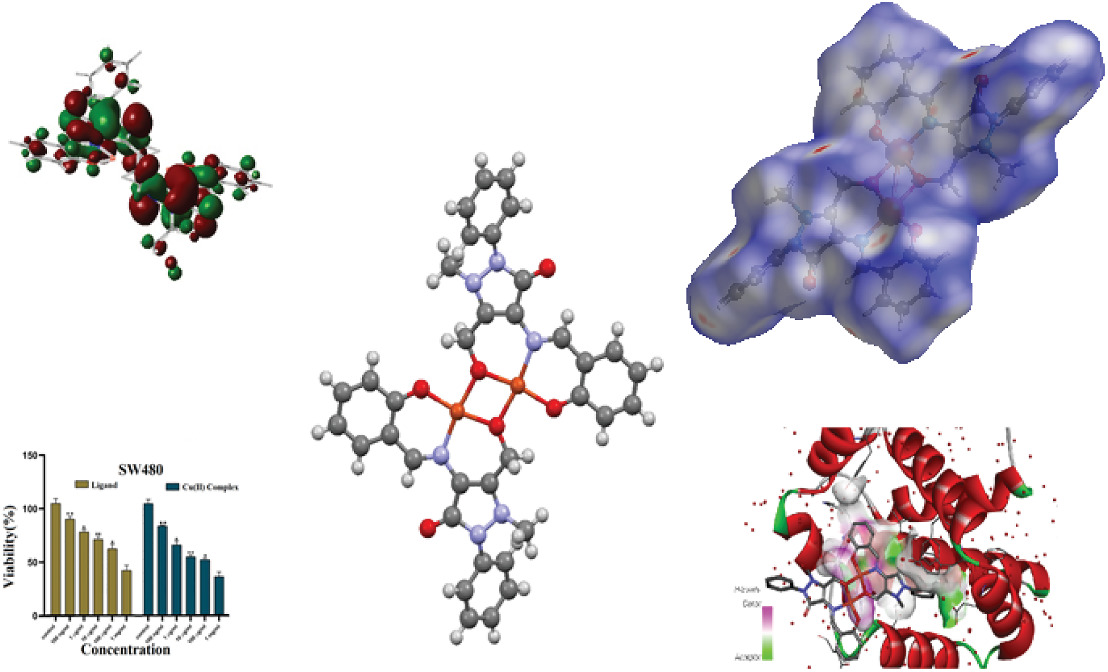
Schiff base Cu (II) complex was synthesized and characterized by X-ray crystallography. Intermolecular interactions in the solid states were studied by Hirshfeld surface analysis. The molecular electrostatic potential map is survey for better understanding the sites active in electrophilic as well as nucleophilic reactions. Optimized structures as well as Fourier transform infrared spectroscopy (FT-IR) and UV–Vis spectra were studied by density functional theory (DFT) calculations. Ligand and Cu (II) complex showed significant anticancer activities against SW480 cell lines by the MTT assay. Docking calculations of these complexes were performed.
Palladium nanoparticles encapsulated in polyimide nanofibers: An efficient and recyclable catalyst for coupling reaction
- First Published: 13 September 2021
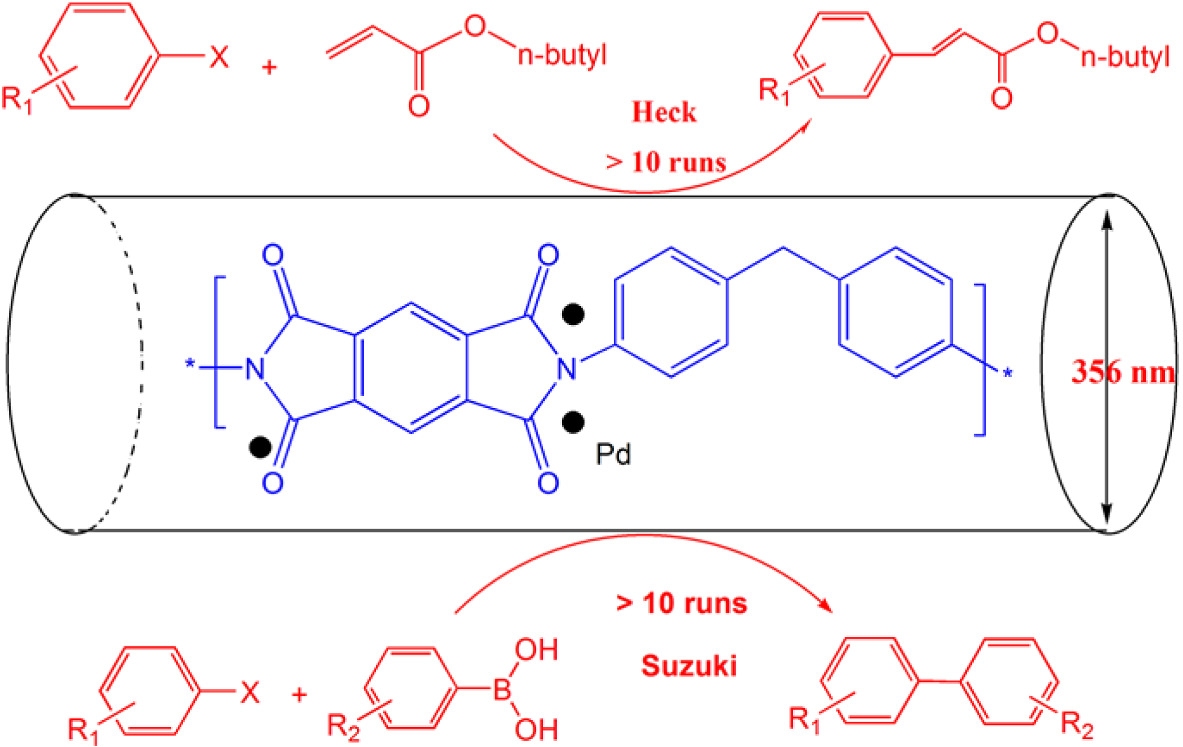
Ultrasmall palladium nanoparticles stabilized by polyimide nanofibers were readily prepared by electrospinning and thermal imidization. These composite nanofibers possessed superior thermal property and chemical resistance as well as mechanical properties. Moreover, the palladium nanoparticles inside the nanofibers exhibited excellent catalytic activity and stability for the Heck and Suzuki coupling reactions. Due to fibrous structure, these composite nanofibers could be easily separated from the reaction mixture and reused for 10 times.
Glucose electrocatalysts derived from mono- or dicarbene coordinated nickel(II) complexes and their mesoporous carbon composites
- First Published: 22 September 2021

Two sterically varied nickel NHC complexes wherein one is a mono-NHC and the other is a bis-NHC have been prepared and compared as electrocatalysts for glucose sensing applications. It was found that the mono-NHC nickel(II) complex exhibited superior glucose sensing activity. The addition of mesoporous carbon to the complexes was found to enhance the glucose sensing performance of the complexes with increased sensitivity, increased linear range and decreased limit of detection.
Hydroboration of alkynylchlorosilanes as an efficient route for the synthesis of SiNNB heterocycles
- First Published: 07 September 2021
Study molecular modeling and the effect of some biological metals on the efficiency of norfloxacin in presence of 3-(bromoacetyl)coumarin
- First Published: 14 September 2021
Nonlinear optical behavior of non-centrosymmetric biferrocenyl Schiff-base derivatives and their DNA binding potential supported by DFT and electrochemical investigations
- First Published: 26 September 2021
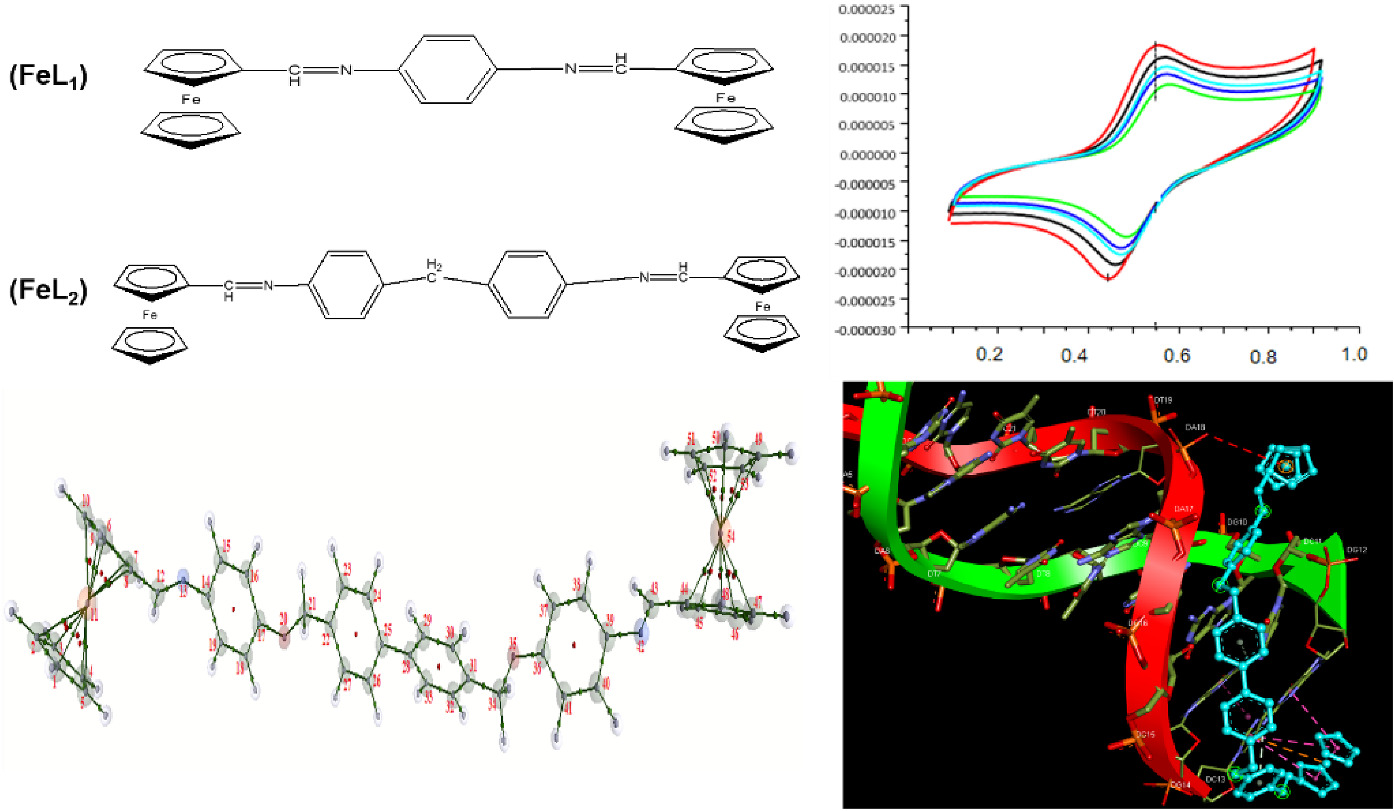
Two new non-centrosymmetric biferrocenyl Schiff bases have been synthesized and studied by density functional theory to understand their nonlinear optical behavior. The synthesized compounds were characterized by FTIR and NMR. DNA binding potential of the derivatives was evaluated through UV–visible spectroscopy, cyclic voltammetry, and molecular docking. Results indicate that the substituted biferrocenyl Schiff bases show a substantial increase in first-order hyperpolarizability (44) times greater than the reference urea) attributed to intramolecular charge transfer.




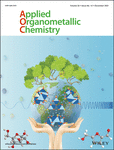
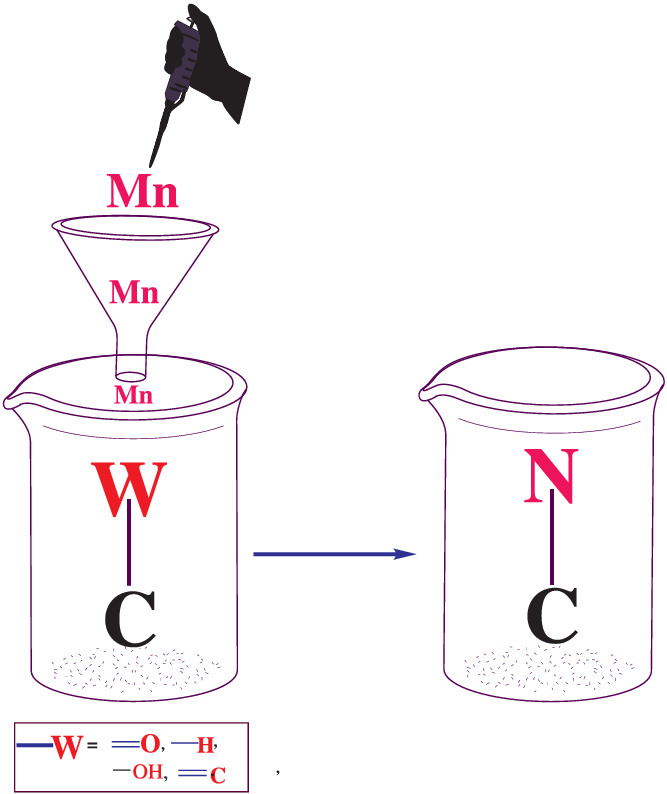

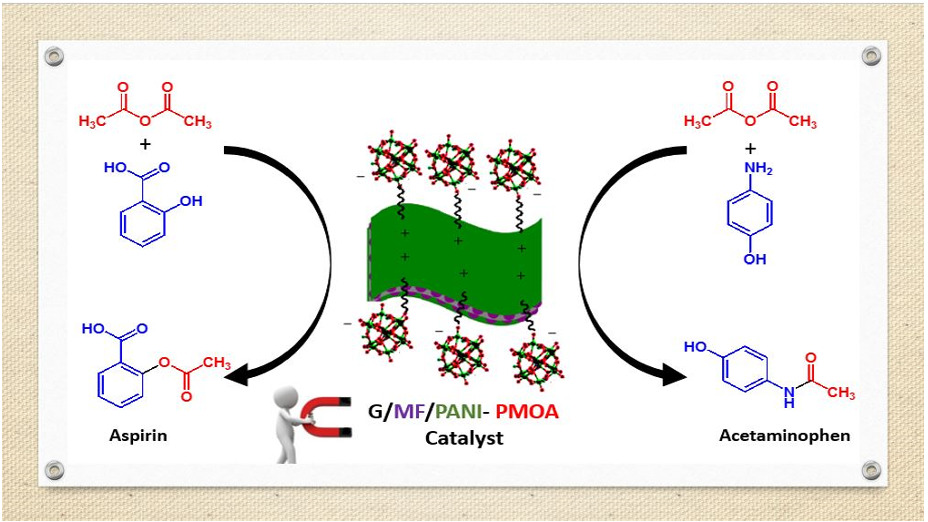
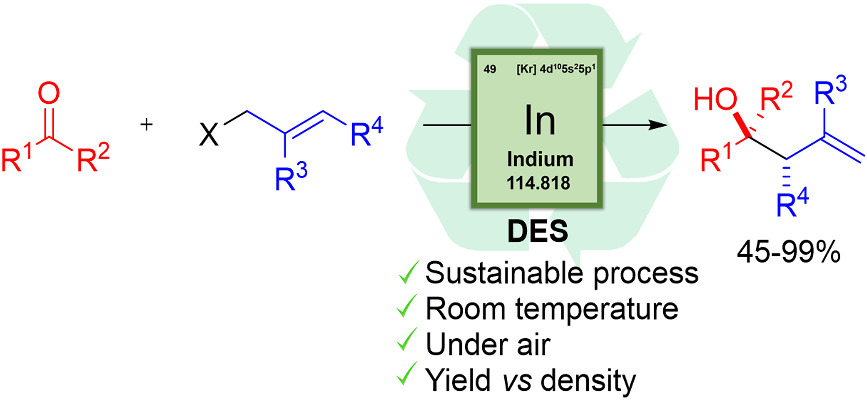
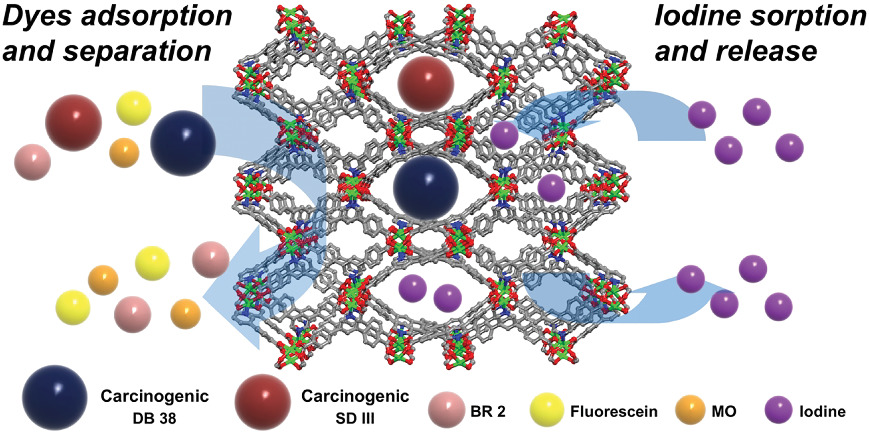
![Ultrasound-promoted novel route to triazabenzo[b]cyclopenta[lm]fluorenes: An efficient NiFe2O4@SiO2–SO3H nanocatalyst-assisted green synthesis](/cms/asset/c0e00c3d-6461-4f86-9b21-f5aea1b44525/aoc6426-toc-0001-m.jpg)
